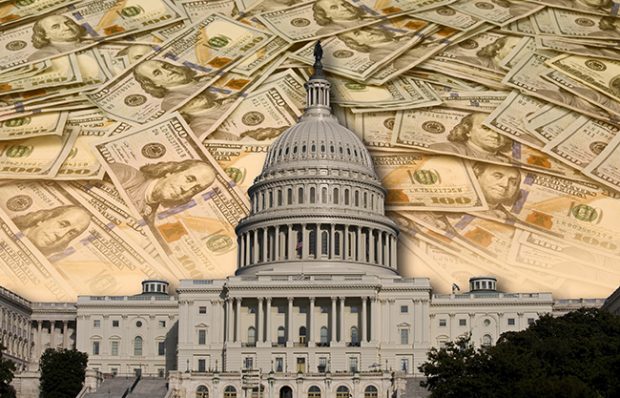 Source: Shutterstock.
Source: Shutterstock.
Loans for cars and other consumer credit ballooned at both credit unions and banks in April, which a NAFCU economist said showed that consumer borrowing is returning to normal.
And CUNA's latest Monthly Credit Union Estimates showed mortgage growth at credit unions in April was nearly as good as consumer loans. Total real estate grew 11.9% to $692.5 billion In April, and rose 2.1% from the previous month, compared with an average of 0.6% from 2017 to 2021.
Recommended For You
The Fed's G-19 Consumer Credit Report released Tuesday showed consumer credit rose by a seasonally adjusted $38.1 billion to hit a record total of $4.57 trillion in April.
NAFCU Chief Economist Curt Long said the growth rate slowed in April, but it still marked the third month in a row with more than $30 billion in additional credit.
"After households paid down debt during the pandemic, balance sheets are clearly returning to normal," Long said.
The Federal Reserve Bank of New York's Consumer Credit Panel indicates that delinquency rates are below their levels from 2020's first quarter across all loan categories.
"For now, borrowers are staying current on payments," he said.
 Curt Long
Curt Long Despite rising interest rates, Long said he expects non-mortgage consumer debt to expand at a solid pace over the remainder of the year due to high inflation and extra borrowing capacity on household balance sheets.
Total consumer credit for credit unions rose 2.1%, on a seasonally adjusted basis in April, compared with gains of 1.4% for banks and 0.2% for finance companies.
Unadjusted figures from the G-19 report showed the amount of credit card debt held by both banks and credit unions continued to inch closer to the level of February 2020, the month before COVID-19 was declared a pandemic and credit card debt began to plummet.
Notably, banks in April reached their greatest share of credit card debt since January 1971, when the Fed data began separating banks from other types of card lenders. Banks' share was 90.7% in April, up from 90.6% in March and 89.8% in April 2021.

Credit unions' share was 6.2% in April, compared with 6.3% in March and 6.4% in April 2021.
Credit unions held $64.7 billion in credit card debt in April, up 10.8% from a year earlier. The gain was 0.8% from March to April this year, compared with a drop of 1.3% from March to April in 2021. The average March-to-April change from 2017 to 2021 was a drop of 0.7%.
Credit unions held $493 billion in non-revolving debt (mostly auto loans and personal loans) on April 30, up 10.8% from a year earlier. Credit unions' gain from March to April was 2.2%, compared with 0.3% a year earlier. Credit unions' share of non-revolving loans was 14.2% in April, compared with 14.0% in March and 13.6% in April 2021.
Banks made similarly strong gains in consumer term loans.
CUNA's report showed total loans grew 13% over 12 months to $1.36 trillion in April, and rose 1.9% from the previous month, compared with a March-to-April average of 0.7% from 2017 to 2021.
Auto loans showed especially strong growth at credit unions at a time when sales have been throttled by supply chain shortages and higher prices.
New car loans grew 5.4% to $150.7 billion in April, and rose 1.9% from the previous month, compared with a March-to-April average of 0.6% from 2017 to 2021.
Used car loans grew 15.2% to $283.8 billion in April, and rose 2.4% from the previous month, compared with an average of 0.6% from 2017 to 2021.
May's new car sales were the lowest since last September, and Cox Automotive on Tuesday estimated that retail sales of used cars in May were down 1% from April and down 7% from May 2021. It said the good news was the 12-month drop "was the best year-over-year performance so far this year."
Why the lower numbers? Blame the IRS. "The issuance of tax refunds continues to be behind normal," it said.
Cox Automotive said the IRS had distributed 74% of projected refunds by May 20, while in 2019 almost all were out by early May. One reward for the wait was that the average refund is at a new record and up 7% from last year.
CUNA's report showed that the nation's 5,083 credit unions had 132.9 million members in April, up 3.3% from April 2021, and up 0.2% from the previous month. The report also showed:
- Assets were $2.16 billion, up 7.2% from April 2021, and rose 0.4% from March.
- Savings were $1.89 billion, up 8.1% from April 2021, and rose 0.7% from March.
- The 60-day-plus delinquency rate was 0.44% as of April 30, compared with 0.47% a year earlier and 0.42% a month earlier.
- Loans per member were $10,217, up 9.3% from April 2021, and rose 1.8% from the previous month.
- Savings per member were $14,240, up 4.6% from April 2021, and rose 0.6% from March.
- First-lien mortgages grew 12.7% to $602.9 billion In April, and rose 1.9% from the previous month, compared with an average of 0.5% from 2017 to 2021.
- Second-lien mortgages grew 6.5% to $89.6 billion In April, and rose 3.5% from the previous month, compared with an average of 1% from 2017 to 2021.
- Unsecured consumer term loans (excluding credit cards) grew 12.9% to $58.9 billion In April, and rose 3.2% from the previous month, compared with an average of 0.4% from 2017 to 2021.
© 2025 ALM Global, LLC, All Rights Reserved. Request academic re-use from www.copyright.com. All other uses, submit a request to [email protected]. For more information visit Asset & Logo Licensing.






